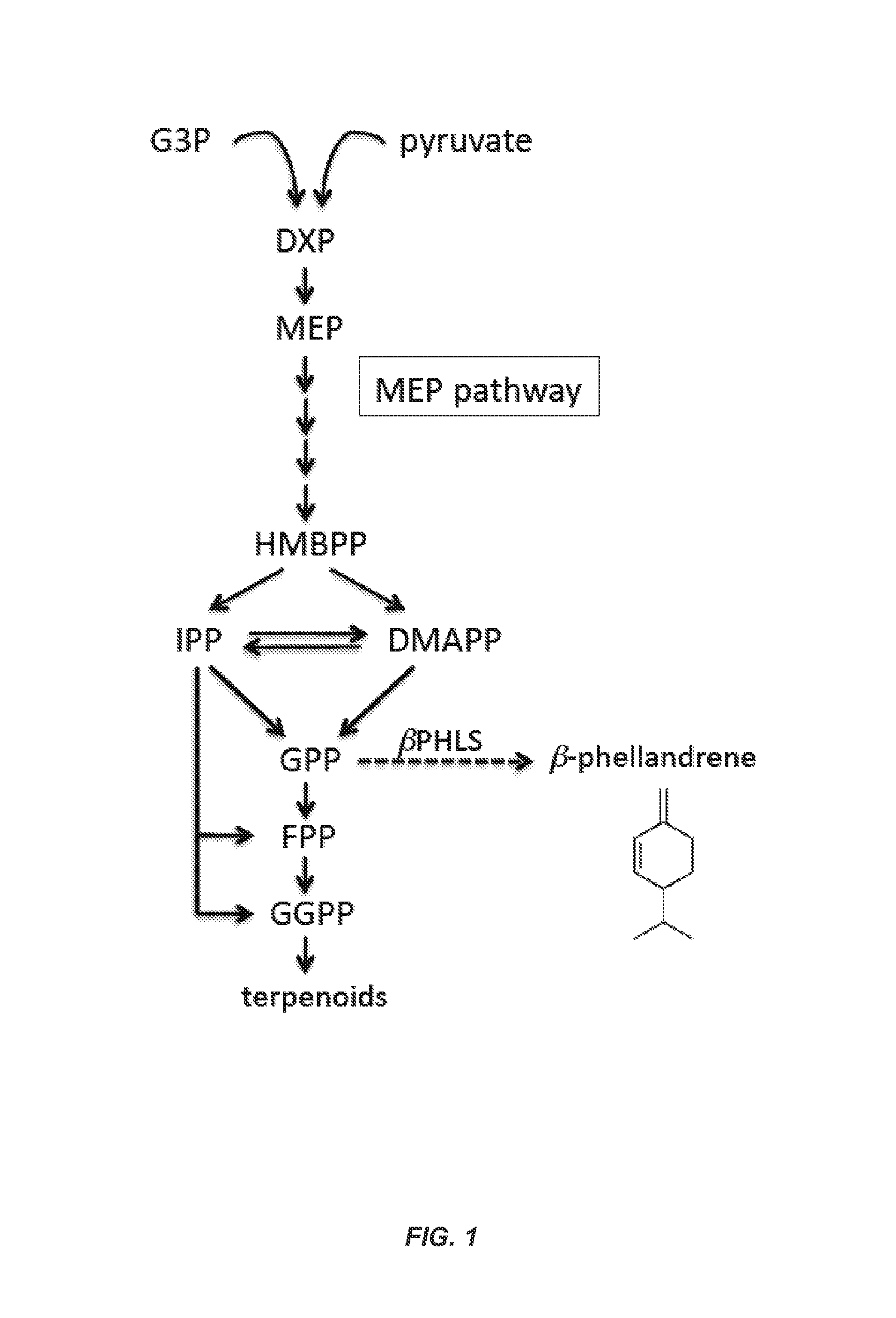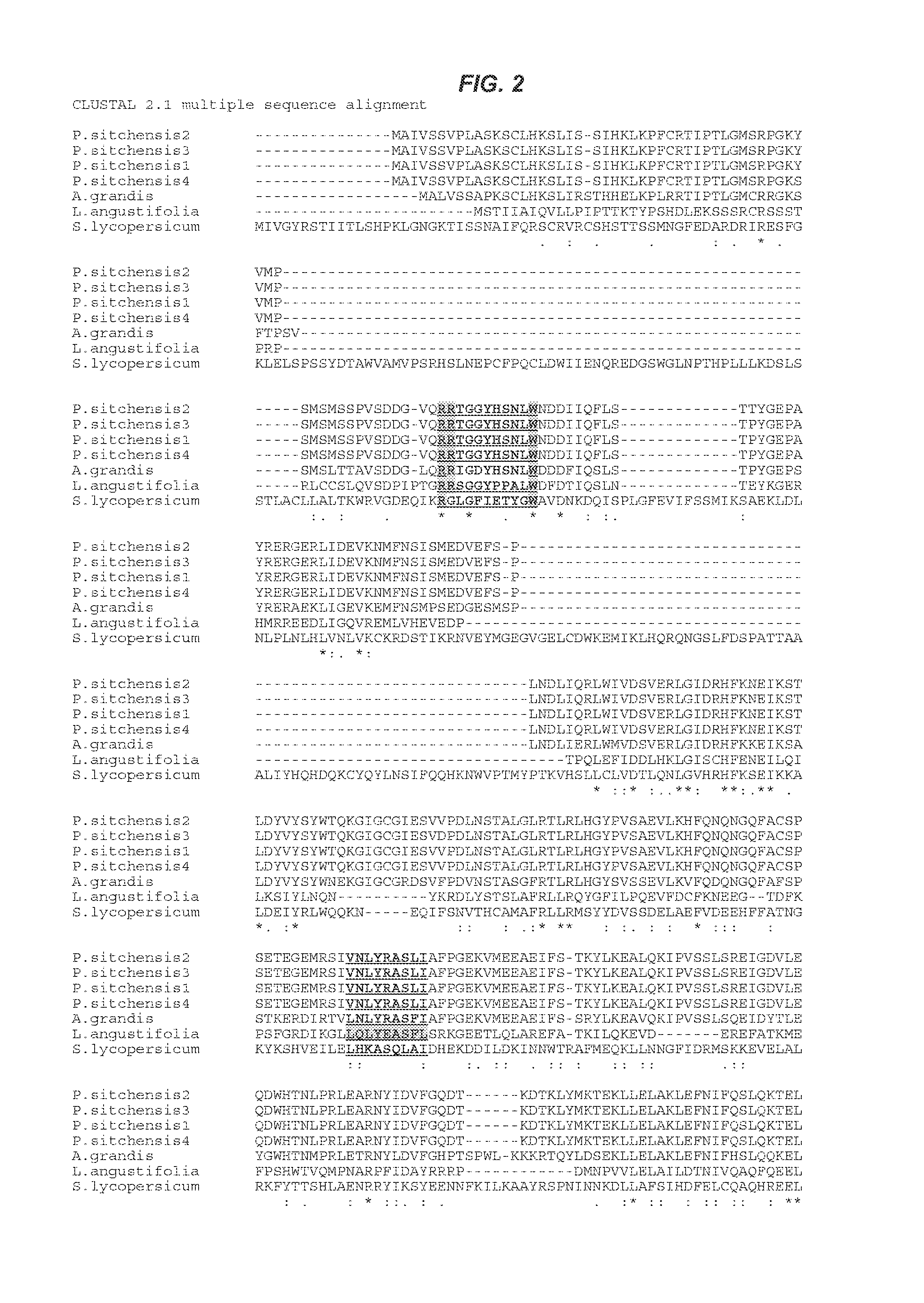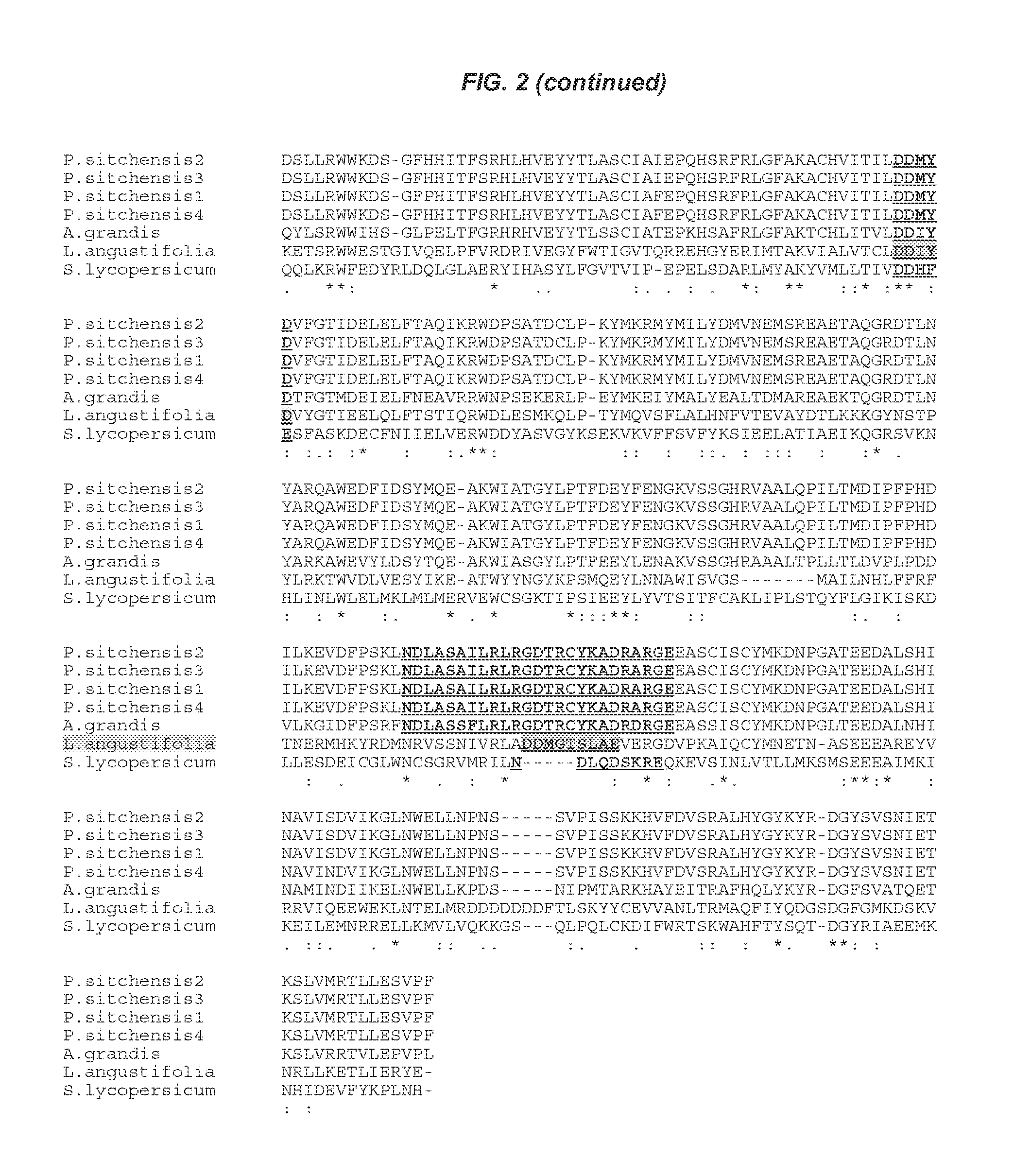Production of beta-phellandrene using genetically engineered cyanobacteria
a technology of cyanobacteria and betaphellandrene, which is applied in the direction of lyase, enzymology, carbon-oxygen lyase, etc., can solve the problems of labor-intensive and costly subsequent purification of individual monoterpenes, such as -phellandrene, and loss of cell fitness,
- Summary
- Abstract
- Description
- Claims
- Application Information
AI Technical Summary
Benefits of technology
Problems solved by technology
Method used
Image
Examples
example 1
β-Phellandrene Production Using Genetically Engineered Cyanobacteria
[0095]The invention provides method and compositions for the genetic modification of cyanobacteria to confer upon these microorganisms the ability to produce β-phellandrene (C10H16) upon heterologous expression of a β-phellandrene synthase gene, e.g., a β-phellandrene synthase gene from lavender (Lavandular angustifolia), grand fir (Abies grandis), tomato (Solanum lycopersicum) or spruce (Picea abies, Picea sitchensis), or a variant thereof. In some embodiments, the invention provides for production of β-phellandrene hydrocarbons in gaseous-aqueous two-phase photobioreactors and results in the renewable generation of a hydrocarbon bio-product, which can be used, e.g., for generating fuel, chemical synthesis, or pharmaceutical and cosmetics applications. This example illustrates expression of a β-phellandrene synthase gene from lavender in cyanobacteria to produce β-phellandrene.
[0096]This example further illustrates...
PUM
| Property | Measurement | Unit |
|---|---|---|
| retention time | aaaaa | aaaaa |
| pH | aaaaa | aaaaa |
| Tm | aaaaa | aaaaa |
Abstract
Description
Claims
Application Information
 Login to View More
Login to View More - R&D
- Intellectual Property
- Life Sciences
- Materials
- Tech Scout
- Unparalleled Data Quality
- Higher Quality Content
- 60% Fewer Hallucinations
Browse by: Latest US Patents, China's latest patents, Technical Efficacy Thesaurus, Application Domain, Technology Topic, Popular Technical Reports.
© 2025 PatSnap. All rights reserved.Legal|Privacy policy|Modern Slavery Act Transparency Statement|Sitemap|About US| Contact US: help@patsnap.com



